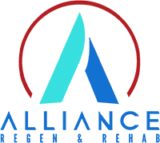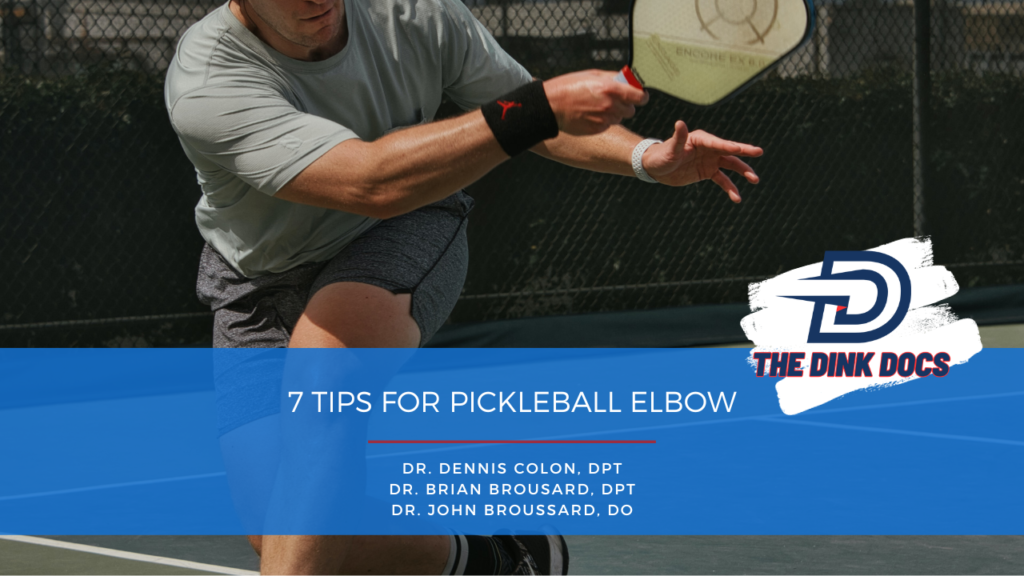As we gather once again for this week’s newsletter, we are excited to delve into a topic that is of paramount importance to all of us – tendon health in the world of Pickleball. Our beloved sport has garnered tremendous popularity among athletes of all ages, and with that comes the need to understand how to protect our bodies from potential injuries and enhance our performance.

This week, we shine a spotlight on a common ailment that can affect Pickleball athletes – tennis elbow. Don’t be fooled by the name, as tennis elbow extends its reach to any sport or activity involving repetitive arm movements, which we often encounter on the Pickleball court. We’ll explore the causes, symptoms, and prevention strategies, equipping you with valuable knowledge to safeguard your elbows and keep the game going strong!
Among the injuries commonly encountered by Pickleball athletes, tennis elbow emerges as a formidable adversary. This debilitating condition, clinically known as lateral epicondylalgia, strikes at the tendons in the outer part of the elbow, triggering inflammation and pain. While the name might suggest a sole association with tennis, this affliction extends its grasp to individuals partaking in activities demanding repetitive arm movements, such as those required in Pickleball.
In this comprehensive blog, we embark on a journey to explore the multifaceted realm of tennis elbow among Pickleball athletes. We shall delve into the origins, manifestations, and prevention of this ailment, seeking to arm players with the knowledge and strategies necessary to protect and optimize their Pickleball journey.

Understanding Pickleball Elbow in Pickleball Athletes
Tennis elbow, also known as lateral epicondylalgia, is a painful condition that occurs when the tendons in the outer part of the elbow become inflamed or weakened over time. Despite its name, tennis elbow isn’t exclusive to tennis players; it can affect individuals who engage in repetitive arm movements, such as those required in Pickleball. The repetitive motions of striking the ball and the impact of the paddle can strain the tendons, leading to micro-tears within the tendon and potential inflammation.
Symptoms of Pickleball Elbow include tenderness and discomfort on the outer part of the elbow, weakness in grip strength, and pain during Pickleball-specific movements. If left untreated, tennis elbow can escalate, presenting significant barriers to an athlete’s ability to revel in the joy of the game they so passionately pursue.

Here is an image of where the weakness and inflammation of the tendon occurs.

So how do we prevent these things from happening and allow you to stay on course? Well, it’s easier said than done, but here are some general tips we like to provide everyone when they start to feel symptoms. Before we delve into the answers, it’s essential to gain insight into how tendinopathies occur.
Tendinopathy is a continuum that spans from early-stage reactive tendons to more advanced degenerative tendons.
It typically arises from overuse or repetitive stress on the tendons, which can lead to microscopic damage and inflammation. If left unaddressed, this can progress to a degenerative state, causing structural changes within the tendon and potentially leading to chronic pain and reduced performance.

Tendinopathy Continuum as proposed by Dr. Jill Cook.
One key aspect of preventing tendinopathies is understanding that tendons adapt to the loads they experience. Gradual and progressive loading, especially during training and physical activities, allows tendons to strengthen and become more resilient. However, sudden increases in training volume, intensity, or frequency can overload the tendons and lead to injury.
Here are some valuable tips to consider if you start to experience symptoms:
1. Listen to Your Body: Pay attention to any pain, discomfort, or changes in your performance. Ignoring early warning signs may lead to more severe issues in the long run.
2. Modify Activity: If you notice symptoms or signs of tendinopathy, it’s essential to modify your activities to avoid exacerbating the condition. Reduce the frequency or intensity of repetitive movements that may be contributing to the issue.
3. Incorporate Proper Warm-Up: Always begin your workouts or games with a thorough warm-up routine. Warming up increases blood flow to the tendons and prepares them for the demands of your Pickleball session.
4. Gradual Progression: If you want to increase your training load, do so gradually. Allow your tendons time to adapt and strengthen to prevent overuse injuries.
6. Strengthening Exercises: Incorporate specific strengthening exercises that target the muscles and tendons involved in Pickleball. Strengthening the surrounding muscles can provide additional support to the tendons.
7. Rest and Recovery: Give yourself sufficient time for rest and recovery between training sessions. Adequate rest allows your body, including the tendons, to repair and rebuild.
Seek Professional Advice: If you experience persistent or severe symptoms, consider consulting a Sports Medicine Physician or a Doctor of Physical Therapy. They can provide tailored advice and treatment options to address the issue effectively.
Remember, tendinopathies are not something to be ignored, as they can become significant obstacles to your Pickleball journey. By understanding how they occur and implementing these preventive measures, you can now take proactive steps to protect your tendons, optimize your performance, and enjoy the game you love for years to come.

Long Duration Isometrics: Enhancing Tendon Health with Insights from Keith Baar
Keith Baar, a professor of molecular exercise physiology at the University of California, Davis, has been at the forefront of research on tendon health and the impact of long-duration isometrics. Baar’s work has shed light on the potential mechanisms through which this training method can promote tendon strength and resilience.
One of the key findings from Baar’s research is that long-duration isometrics trigger the synthesis of collagen, a primary component of tendons.
Collagen provides the structural framework for tendons, and its production is essential for maintaining tendon integrity and promoting tissue repair.
Long-duration isometrics appear to stimulate collagen production through the activation of specific signaling pathways within the tendon cells, known as tenocytes.

Here is a picture of the structural anatomy of a tendon!
Benefits of Long-Duration Isometrics for Tendon Health:
1. Increased Tendon Strength: By promoting collagen synthesis, long-duration isometrics can enhance the tensile strength of tendons. This, in turn, may reduce the risk of tendon injuries, such as tendinitis and tendinopathy, common issues among athletes.
2. Improved Tendon Stiffness: Optimal tendon stiffness is vital for efficient energy transfer during physical activities. Long-duration isometrics may help to optimize tendon stiffness, potentially enhancing athletic performance and reducing the strain on muscles.
3. Enhanced Tendon Resilience: Long-duration isometrics can stimulate the production of other extracellular matrix proteins within tendons, contributing to improved tissue resilience and better adaptation to repetitive loading.
4. Injury Prevention: By fortifying tendons and increasing their capacity to withstand stress, long-duration isometrics may help prevent overuse injuries associated with repetitive movements common in sports and physical activities.

Sorry about this one haha
Why did the tendon refuse to play Pickleball?
Because it didn’t want to “stretch” itself too thin and risk ending up in a “pickle”! 😄


I know this website offers quality based articles and additional information, is there any other site which offers these kinds of data in quality?
My spouse and I absolutely love your blog and find nearly all of your post’s to be exactly I’m looking for.
Does one offer guest writers to write content for
you? I wouldn’t mind composing a post or elaborating on a few of the subjects you write about here.
Again, awesome web site!